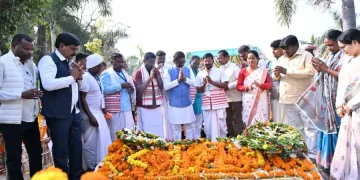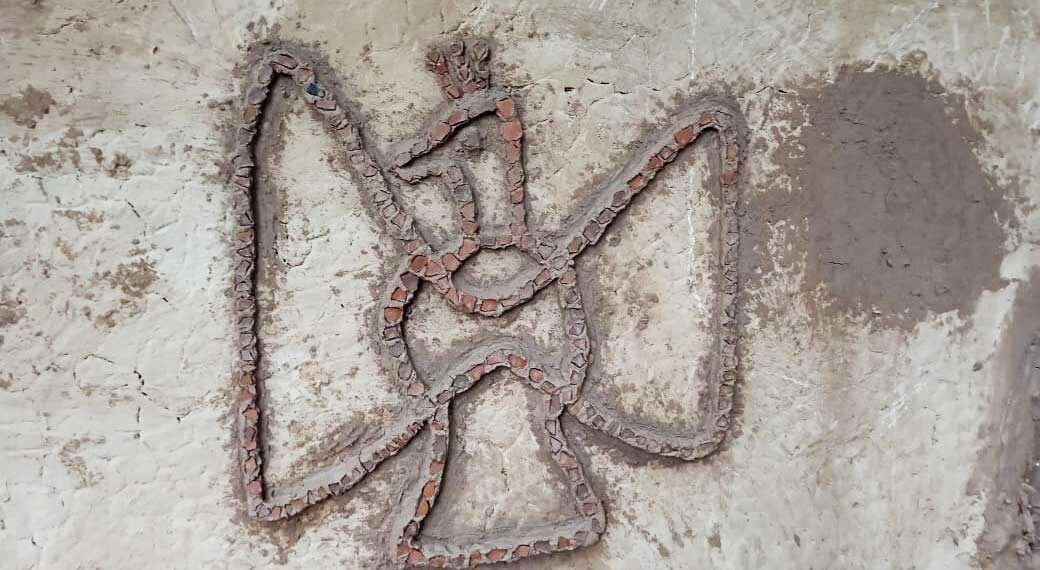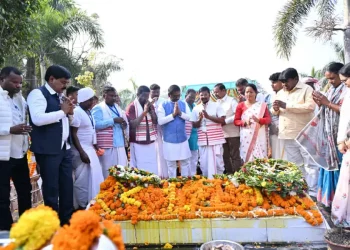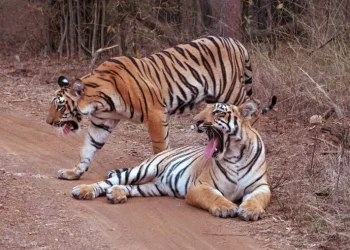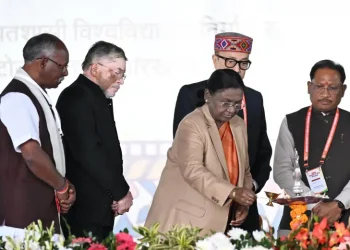The Madia tribe has a vibrant tradition of art, though much of it has only recently come to the fore. This is evidenced from Odisha’s tribal craft, Khapar Kala, named only recently after long years of anonymity.
In Nilagiri block’s Babandh, women and girls decorate the floors and walls of their mud huts with a beautiful multi-hued mosaic of sorts. Although the origin of the tribal craft is not accurately known, all the women remember having acquired the skill from their mothers and grandmothers.
Tucked away in a small village of Balasore district, this unique art uses bits of pottery (khapar) and is named after the raw material. However, it was nameless when it came to the notice of charitable trust Bana Dhulira Phula in 2013.
“We called it Khapar Kala and tried to revive it by organising competitions among the young girls in the village,” says painter Kesu Das, cultural adviser to the trust in Silabani.
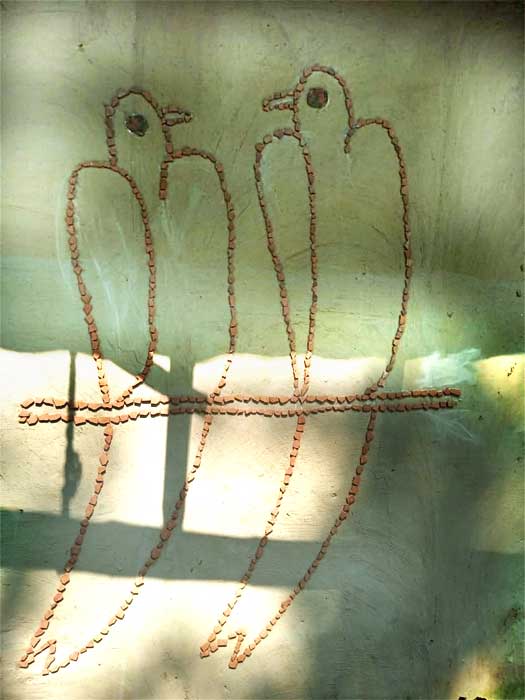
Wet mud is spread thickly over the area of work. The girls eke outlines of various birds, animals and flowers into the mud. The pottery bits are then embedded to fill out the sketched shapes and designs
But what really gave impetus to the tribal craft was a short documentary, Shishu Adivasi Kalakar, Silli (Child Tribal Artist, Silli). It was screened in the International Tribal Festival 2021, held online and sponsored by Bhubaneswar-based JSB-Ori Farming.
The film’s protagonist is Sushmita, nicknamed Silli, a student of class VIII, who is a khapar artist of Silabani village. After the film, Silli became an instant hit and was showered with gifts and cash awards by organisations.
“The success of the documentary film at the festival, where about 25 countries like Brazil, USA and Afghanistan made their representations, inspired me and a couple of my friends to go in for Khapar Kala,” admits Silli. Several other Madia girls followed suit, popularising the tribal craft.
As Das says, “It can be converted into different decorative items like wall hangings, flowerpots and photo frames through a bit of value addition, such as framing and shaping.”
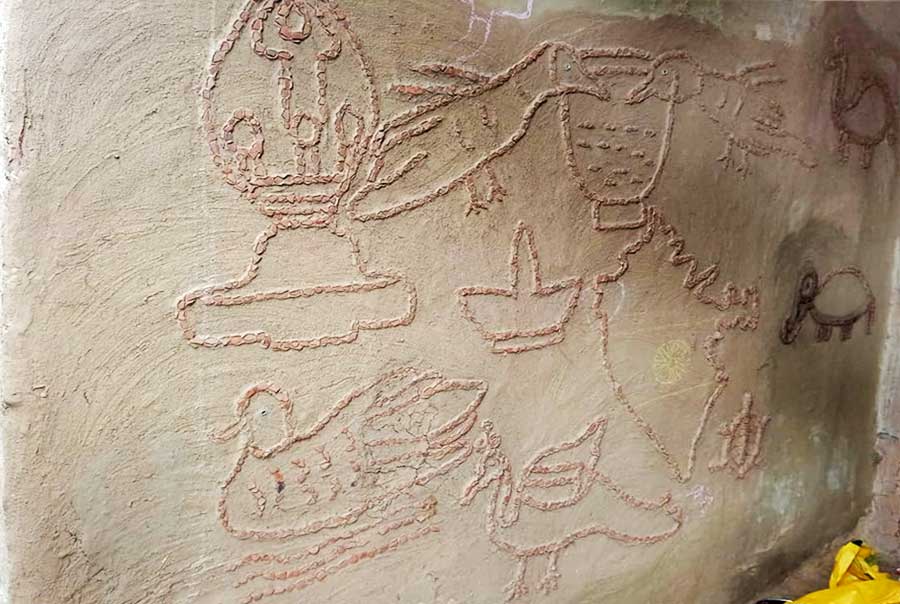
Khapar Kala is an all-women show. They collect pottery fragments in three different colours — the deep brown well-baked ones, the black charred bits and the very light brown for a whitish colour.
Men of the Madia tribe are potters by profession and so there are plenty of waste bits and pieces lying around the kilns.
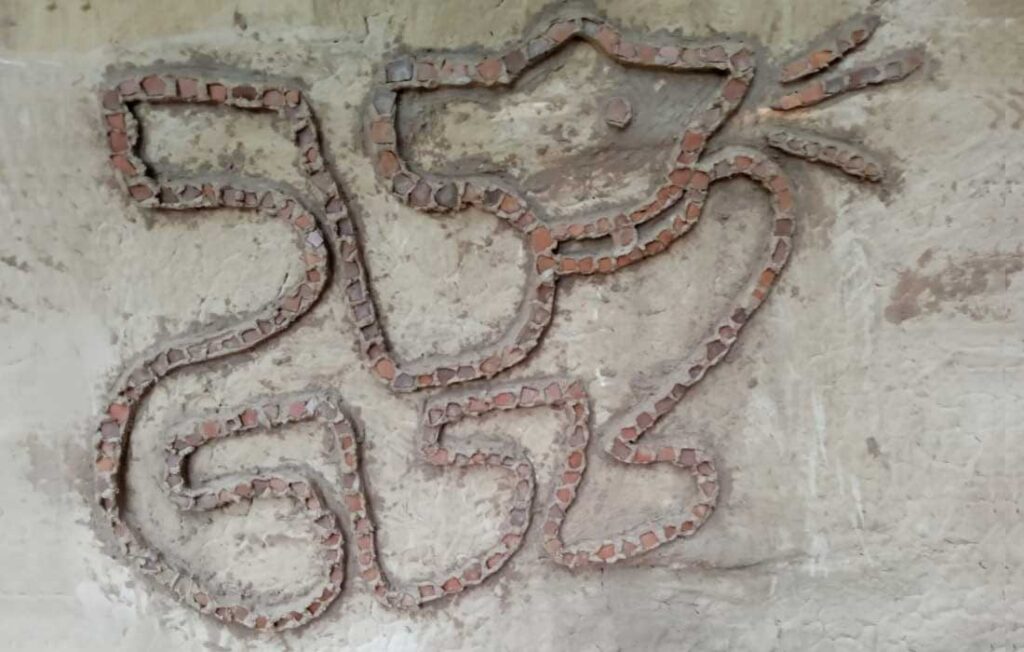
Wet mud is spread thickly over the area of work. The girls eke outlines of various birds, animals and flowers into the mud. The pottery bits are then embedded to fill out the sketched shapes and designs, making a montage.
The effect is extraordinary. The three colours fill the eye and the embedded fragments create a mural that celebrates the beauty of nature. “The whole set-up on the walls and floors looks as beautiful as mosaic,” says Das enthusiastically.
Perhaps, the tribals will get their due recognition in course of time as the skill proliferates.

